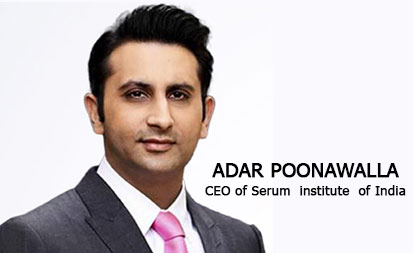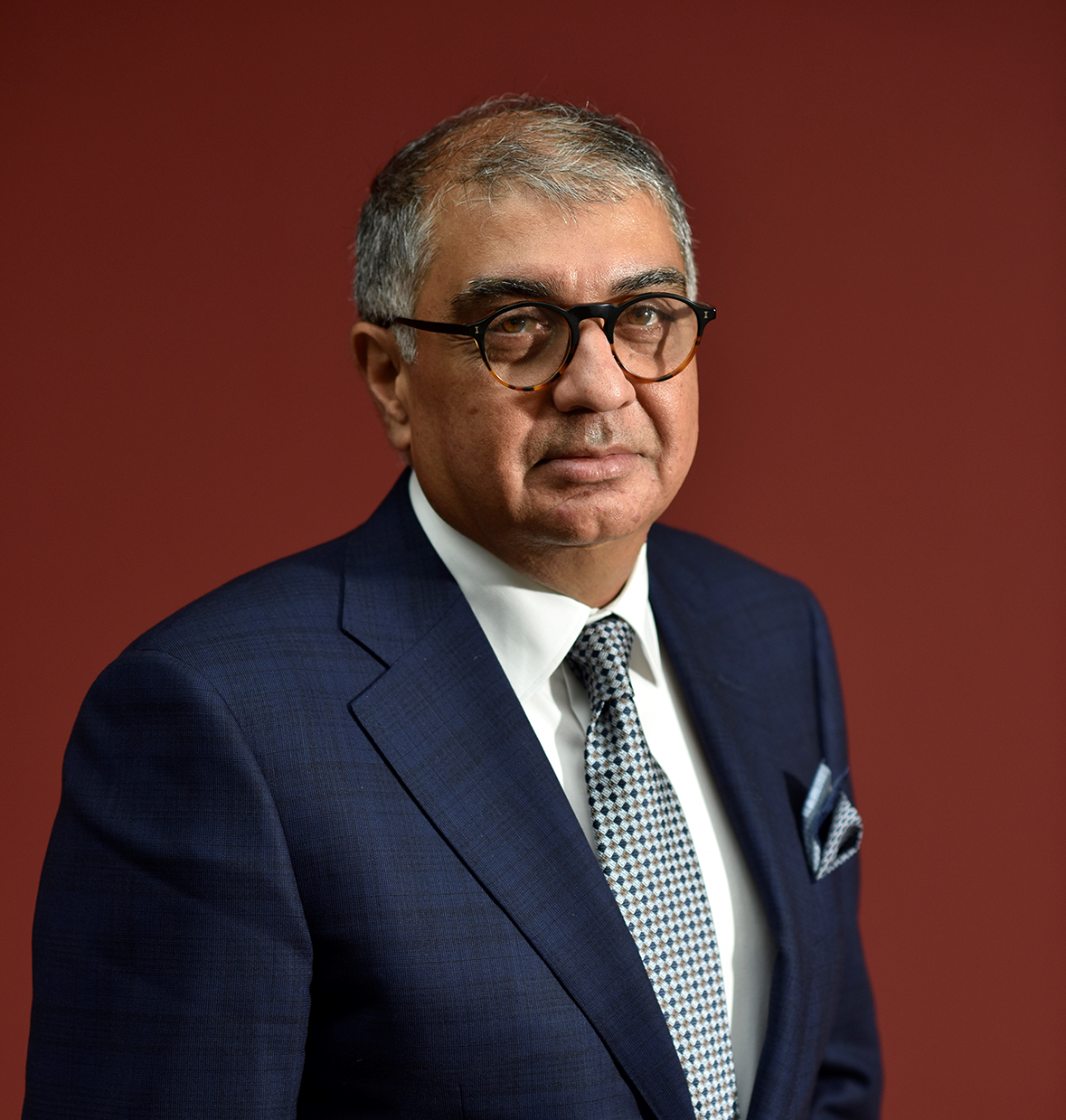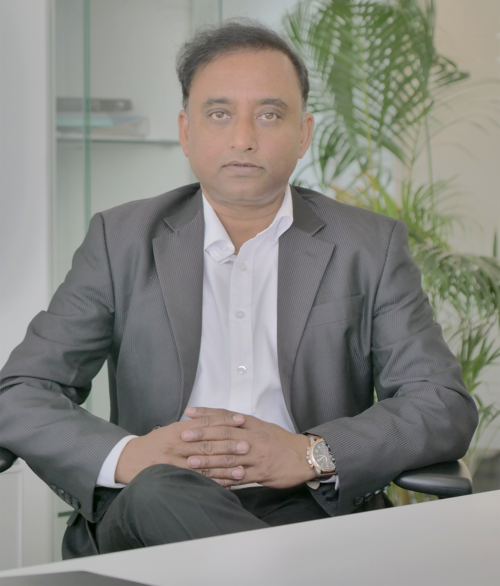Interview: Adar Poonawalla, CEO of Serum Institute of India about Covid Vaccine.
Q: This is preliminary data that has been put out, it does look encouraging but so does the data that has been put out by others like Pfizer, Moderna, CanSino Biologics. On a reading of

Q: This is preliminary data that has been put out, it does look encouraging but so does the data that has been put out by others like Pfizer, Moderna, CanSino Biologics. On a reading of the data as you currently have, what gives you the confidence that we are going to see a breakthrough? I will put this into context for instance what the executive associate dean of the Emory University of Medicine at Atlanta has said. In the context of the HIV vaccine that we have seen a lot of encouraging data in the initial stages but when we get to phase-III, there is no breakthrough. So how confident do you feel on the back of the data that you now have access to?
A: I will just bring that down – compared to those other companies you mentioned, the phase-I trial done by AstraZeneca and Oxford is in thousand patients where 500 were the perceiver and 500 were the vaccinated whereas the others were only 40-60 patients only. So they haven’t done a very large phase-I compared to what AstraZeneca has done. So I would count on the data that we have got there to be a little bit more credible because of more patients that AstraZeneca and Oxford have done the study in phase-I with.
Having said that, we also have seen the T-cell response compared to let us say CanSino to be much better in the AstraZeneca-Oxford product. The T-cell response, just to clarify is what your memory and long-term response indicates that the vaccine will be able to protect you for the long-term. What we have also seen in the data, the neutralising antibodies have also been 90 percent of the subjects demonstrated neutralising antibodies.
Coming to the last part of your question, does that really mean still that the vaccine will be efficacious and protective against COVID? The answer to that will be in phase-III study when we will do the efficacy trial in 5,000-10,000 people, patients and that is already underway in the UK and we are going to do similar one to about 4,000-5,000 patients in India as well starting in the next two weeks because we are applying to the drug controller of India this week for this permission based on the phase-I data that has come out.
So this is the breakup of the study, this is how we are compared to some of the other candidates. We will have to wait and see till the end, where we know for sure the phase-III is passing, one thing is for sure, it is safe, it has only given mild reactions, fever, headache, which is expected of vaccines, it has not caused any severe side-effects, so at least the safety is definitely proven and we have got these indicators for the antibodies.
Q: Let me address the two issues that you spoke of, let me start by asking you about the timeline. Sarah Gilbert to BBC Radio has said – she expects the vaccine to be made available in the first six months of 2021 if the phase-III trials are complete by the end of 2020. Is that a realistic timeline to work with that it could be 2021 if the phase-III trials are going to be as per plan?
A: I was just making a quick calculation in my head because of the time taken between license share and production and release of batches. I think she is absolutely right. We are starting to manufacture 300-400 million doses by the end of this year because if we get the permission to manufacture large batches in August when we get the phase-III permission then we can start manufacturing largescale batches and have 300-400 million by the end of December, which means Q1 and Q2, you have the rollout of the vaccine just like Sarah Gilbert has mentioned.
We have already made a few million doses at small scale as I have mentioned to you earlier to make sure that the vaccine works, it is producing perfectly and in their manufacturing line, we have not seen any issues and we are scaling up very soon, it is identical to the product that was made in the UK and we have characterised it to confirm that. So all that has moved up pretty well. Now, all we are waiting for is the trial permission, which we should get in the next few weeks and then we go from there.
Q: So let me now focus on India and the approvals that you require, you said that you will be applying to the DGCI so that application hasn’t gone in yet, what is the timeline between application and I know all regulators have been asked to expedite matters but between getting the approvals from the DGCI to actually being able to start the trials, Bharat Biotech has only just initiated its trials, yesterday was the announcement that came in from the director of AIIMS so can you give me some indicative timeline of what you expect the phases as far as the trials are concerned in terms of timeline?
A: I can confirm, we are making this application within the next 48 hours to the drug controller’s office. They will probably take because of its fastrack nature and everyone is fastracking everything probably take about a week to two weeks to decide on what kind of study and trial we will have to do. From that moment to injecting patients in hospitals probably another two-three weeks because everything is accelerated. So we are talking about a month to a month and a half from today – we are hoping to inject maybe even sooner but I am being very cautious on my timelines – we should inject patients in a month and a half maximum from today. That trial will probably take a maximum of another two months and then that is when you look at a license share date that is why I mentioned November or so.
Q: You spoke of being able to start the trial in about a month, the month and a half max, in terms of sites for the trial, in terms of the number of people that you are going to enrol for the trial, give me some of the details?
A: Apart from all my friends who have volunteered to be part of the trial I have had to say no because ethically that is not allowed. But we don’t have a shortage of India volunteers for this trial. We expect a very quick recruitment to happen between Mumbai and Pune these are the two cities where we have chosen these sites and hospitals which I don’t have the whole list, but there is a list of hospitals because this is where the incidence is the heaviest and you need a lot of infection in an area to be able to prove that a vaccine is working and that was one of the challenges the UK trials had because as the rates were declining to prove that a vaccine is working in that sort of scenario beyond reasonable doubt is challenging.
Statistically, you need to prove that there were so many cases and that is why you have been able to have a vaccine that protects you. So Mumbai and Pune is ideally suited for these sites, we have already chosen that and very soon the Drug Controller General of India (DCGI) and ICMR and others will indicate what those sites are and the recruitment and trial should begin very quickly.
Q: As far as the Oxford AstraZeneca trial is concerned people over the age group of 55 have not been part of the trial is my understanding. Now will that be the same here in India because one would imagine that that is the most vulnerable group, so why is it that you have chosen not to test this on or why is Oxford AstraZeneca chosen not to test this on people above 55 and will you do something similar in India or will you perhaps look at testing people above the age of 55?
A: That is a very good question because you are vulnerable beyond that age and to enrol you first in the first trials and studies might have concerns. But that is exactly what they are doing what you said is they are going to have further studies with the elderly. Now that we know that the vaccine is safe, I think they are planning very soon to add on the elderly population to really show that it protects them as well and in India we are going to have a mix of the elderly, the healthcare workers and everybody, so that we get a very fair sense of the data.
Q: Let us now talk about what you have already done you said that you have manufactured small batches of the vaccine already and when we last spoke you had said that you plan to manufacture at risk. So the trials you expect to start in about a month, a month and a half, what is the plan as far as manufacturing is concerned and how many doses have you currently manufactured?
A: Right now it is just 2-3 million doses under test and analysis, so that will never go into human beings that is just to stabilize the manufacturing process, the yields, the stability, sterility and all of that. Now as soon as we apply for the phase three permission and we have that granted the phase two by three permission that we applying for, we will simultaneously get us special permission for manufacturing at risk, but not releasing into the market obviously till the product is licensed which will be end of the year. Giving us the month of August, September and October to produce 60-70 million doses per month, going on like that at that rate and maybe even reaching about a 100 million doses per month by the time you reach December so that that way you are going be making probably a billion doses by the end of 2021.
So if you look at the process right now, the risk of the OPEX that we are going be putting in is more than USD 200 million that we are putting it at risk – that if this vaccine fails we will be down USD 200 million because that is the glass vials, the chemicals, the raw materials, the facility, the manpower and I am not even counting the opportunity cost of the other products that were designed to go into that production line that we have sacrificed. So we have got a lot on the line and we have bet big on this candidate and we really hope in there that it works.
Q: So that is important you are saying that if this vaccine fails Serum Institute will be down by about 200 million that is what you anticipate in terms of OPEX. Are you also looking at fundraising, there were some reports that suggested that you are looking at raising capital at this point in time is that accurate?
A: Yes, it is not happening at the Serum Institute level, it will happen if at all and we get the right offers and valuations in a subsidiary which has 5 COVID vaccine candidates and other vaccine candidates including a 1 billion dose facility as an asset. So that is something where we might raise value in. It is still very early, the bankers are just talking to the funds right now and if that clicks in a month or two we will probably dilute 15-20 percent equity in that and raise capital. They are not at the Serum Institute level because that has other implications for all the other vaccines and commitments because that is a much larger picture and a much larger entity.
Right now the valuations that we see for COVID vaccine manufacturing and candidates like you have seen in Novavax and Moderna is just crazy at the moment so we looked at maybe hedging our bets to be able to manage all the capex and OPEX risks that we are seeing by bringing on board some investors who understand these risks and also are committed to the cause of making a difference to humanity. So it is those kind of investments.
Q: I want to get some details from you on the arrangement that you have with Oxford and AstraZeneca. Now you are going to be manufacturing the vaccine here in India are you possibly looking at other collaborations as well because there is a bunch of vaccine candidates out there at various stages of development, everybody wants the vaccine, people are also talking about making it as affordable and accessible possible. So is there the likelihood that you may even consider tying-up as a contract manufacturer for others?
A: We have already done that for five other candidates in fact, we have not publicly spoken about it because they are further behind in the clinics, then phase one by two, you have got Novavax we have tied up with them for the GAVI countries in India that is also very good leading candidate probably a month or two behind AstraZeneca. You have got 1-2 other companies that I can’t mention including two of our own candidates. So based on our measles vaccine we have tied up with somebody who is I am going to announce that very soon, which is put the COVID VLP on it and same with the Hepatitis B vaccine, so we have got two of our own candidates that we are hoping for licensure end of 2021. We have got Codagenix with worldwide rights. It is a US company that we have negotiated to partner to make their product and we are going to go through their clinical trials also in India. We have got Novavax, we have got AstraZeneca, so that is five already and we’re probably going to be partnering with two more companies one which is a mRNA, or messenger RNA and something else as well which we will announce soon.
So I think that will be more than enough to hedge our bets amongst so many vaccines and look we are not in a race for anyone vaccine to succeed before the other. We want to have as many chances and as many different candidates against the disease so we have the best chance as humanity to deal with the disease because some vaccines may turn out to be better than others, some may give a longer term immunity some may be two dose vaccine. So we are experimenting and we are sort of at the moment hedging all those bets and we are hoping that all succeed and then we will see which out of the five or six maybe two or three are the ones that we pick and we manufacture but AstraZeneca is one that we have committed the most to and as I mentioned the OPEX and everything and we are betting the most on right now and everything else will be a couple of months behind that.






